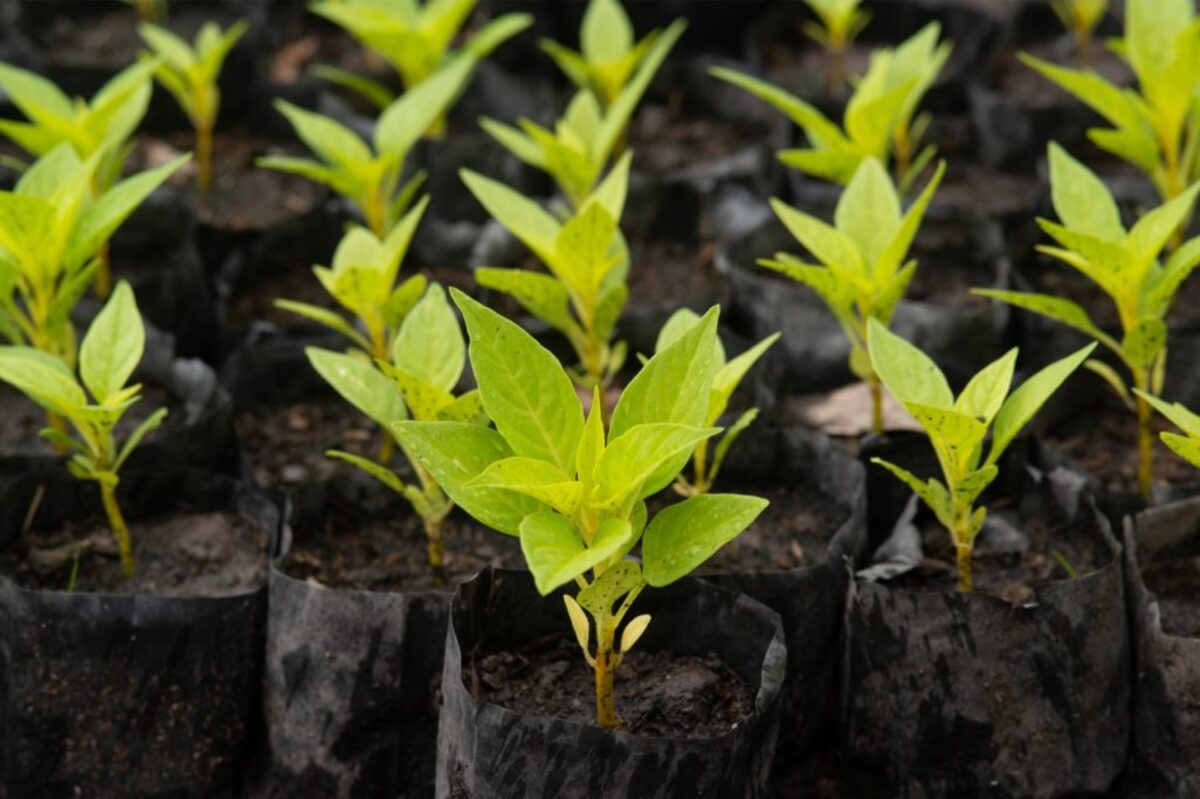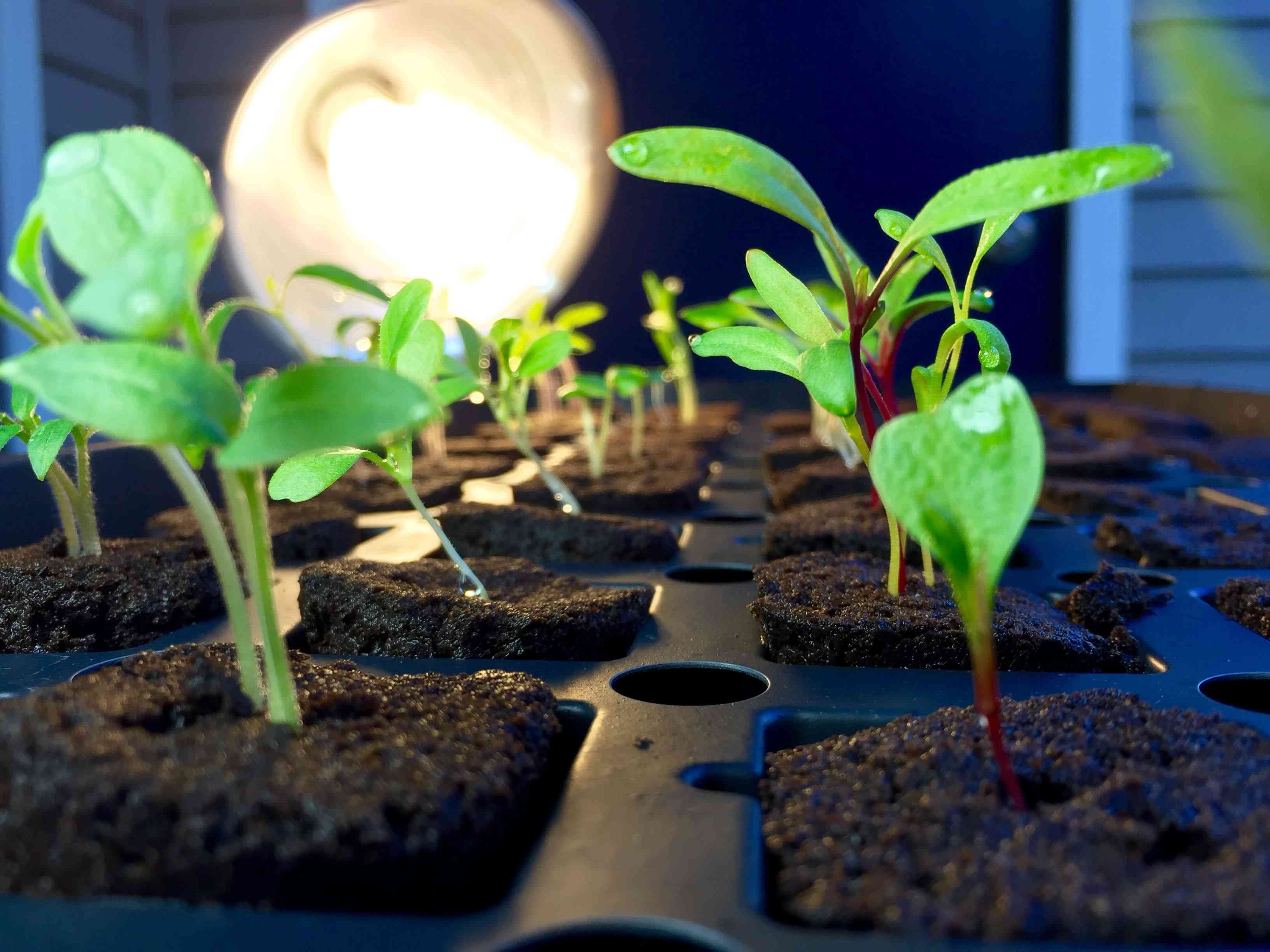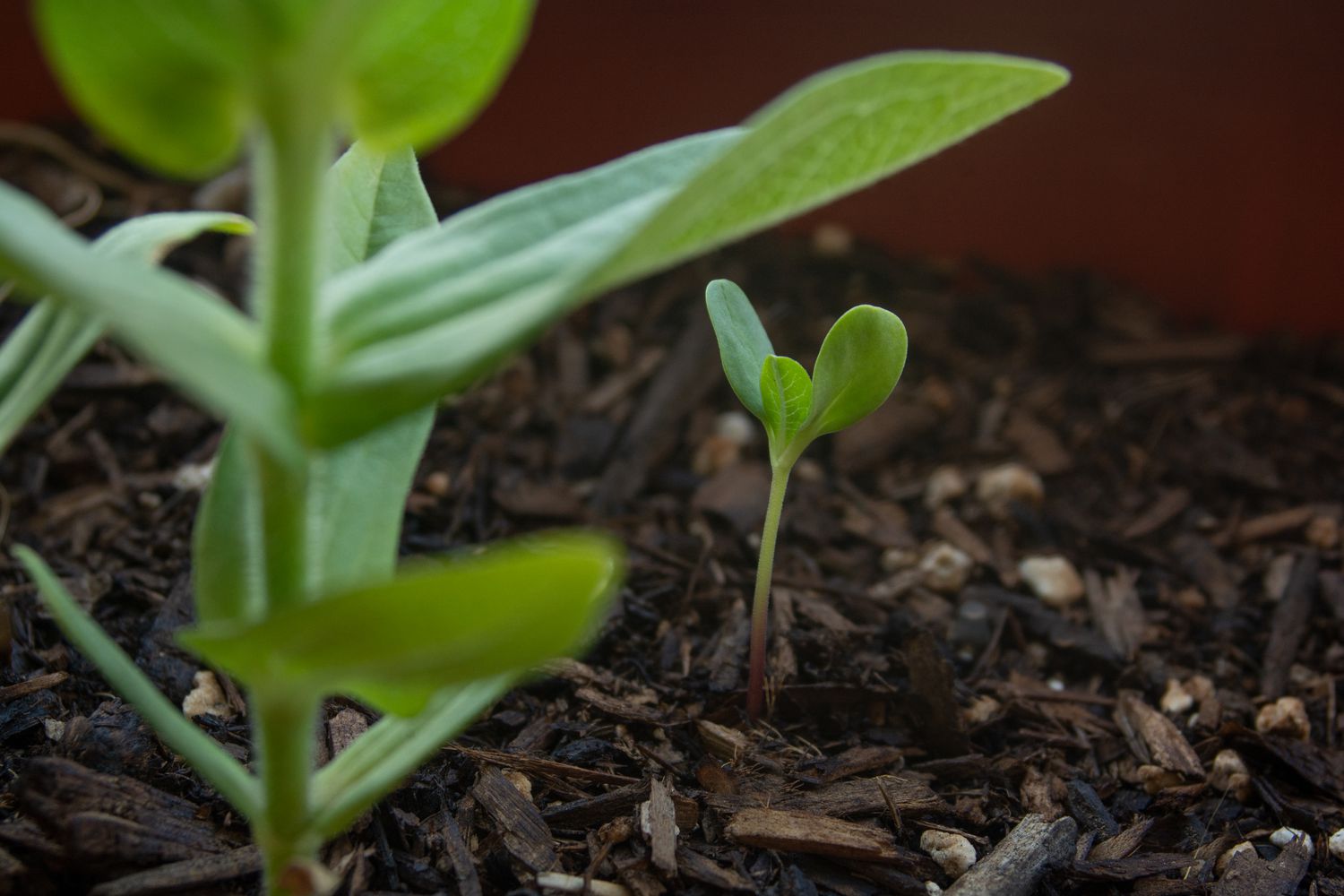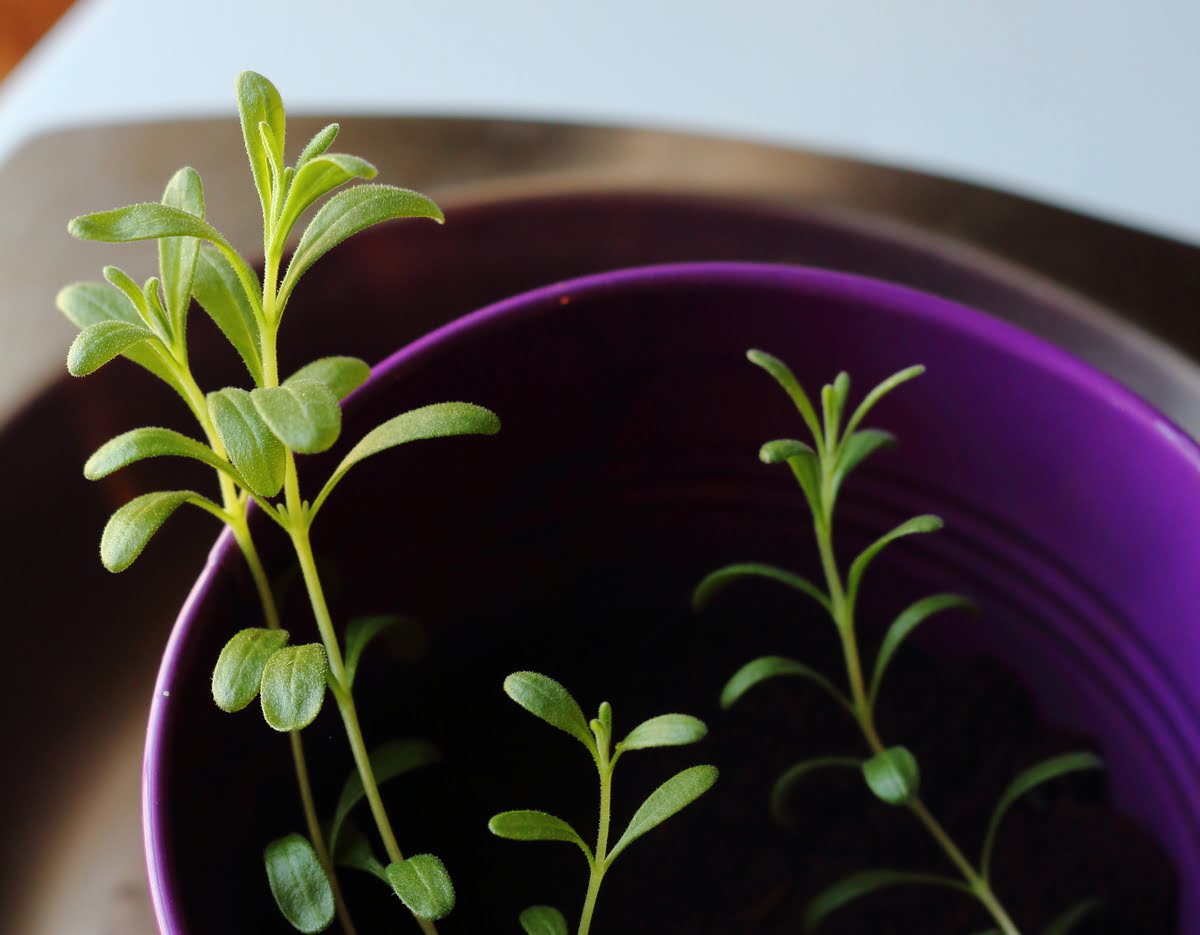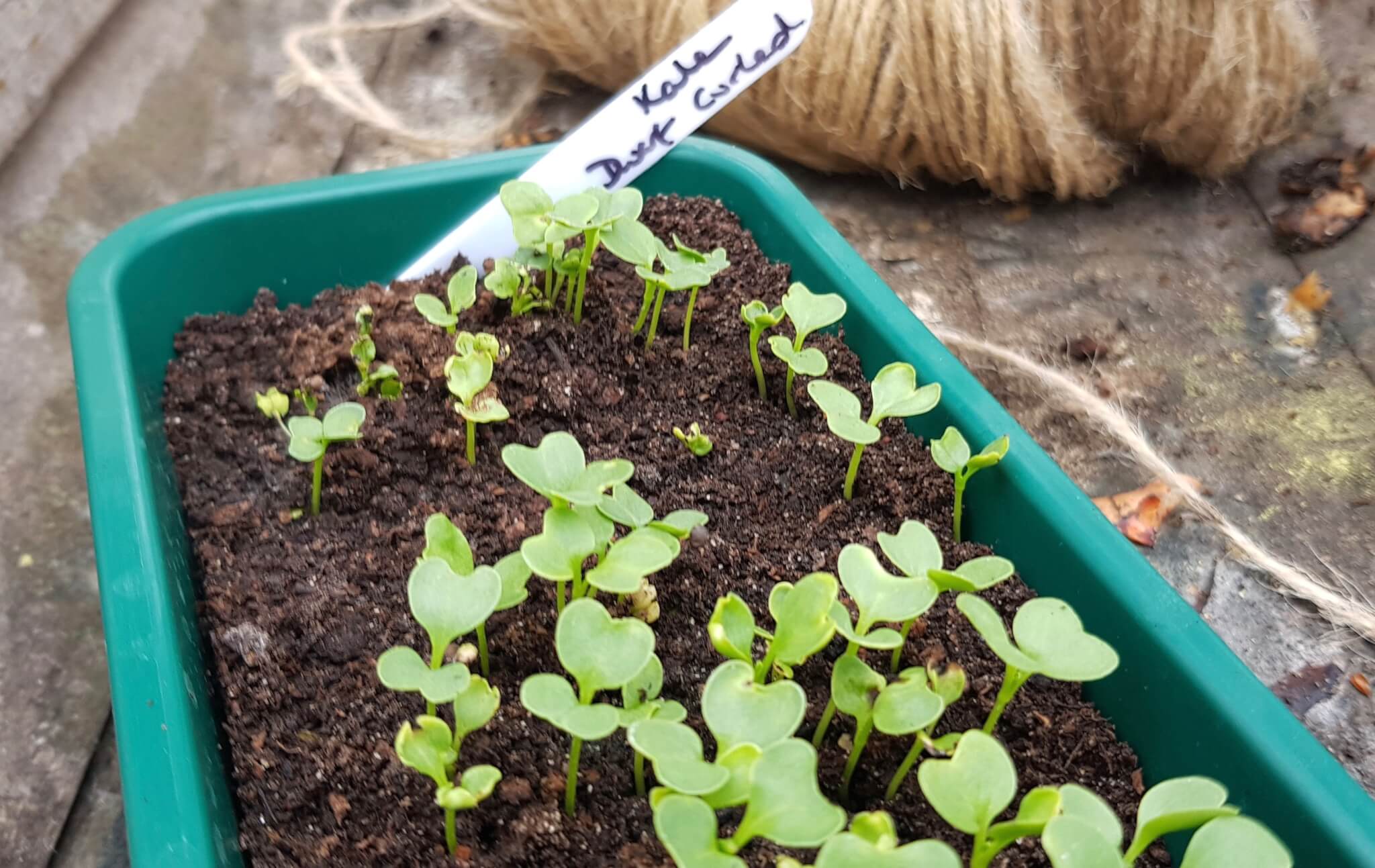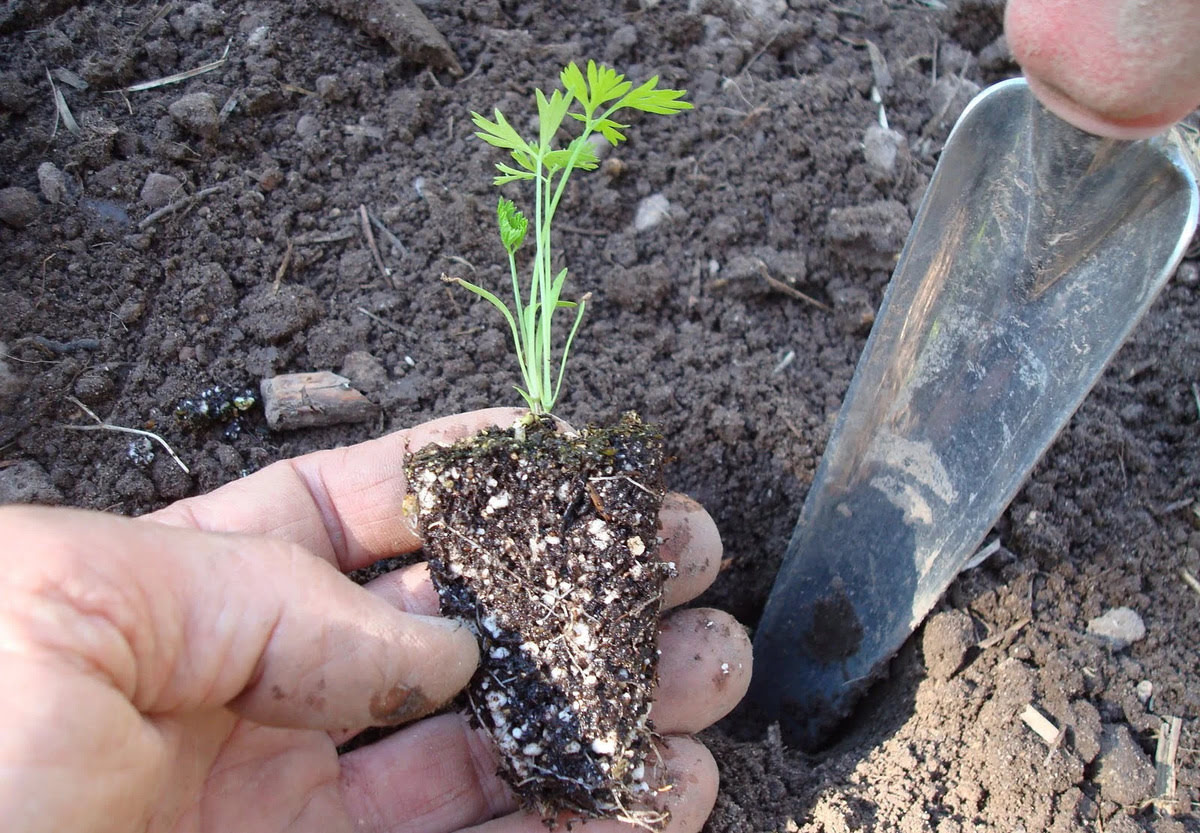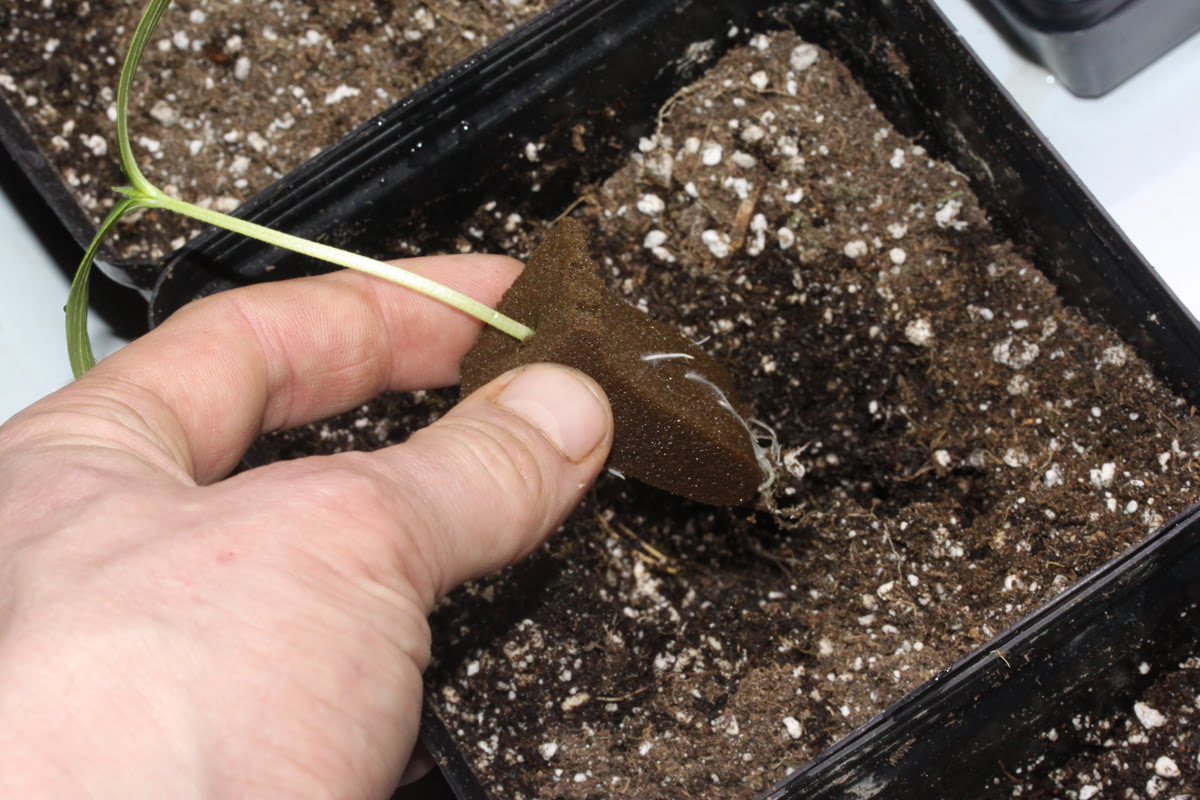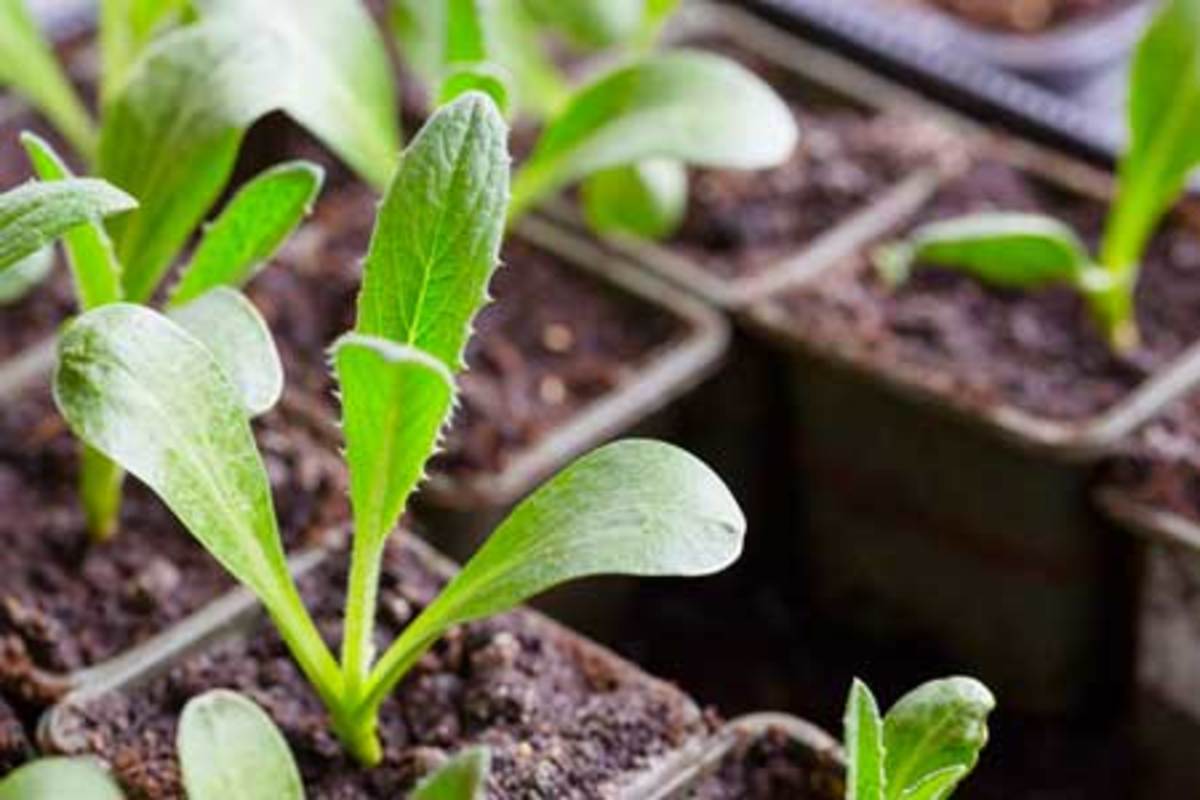Home>Types of Gardening>Edible Gardening>When To Transplant Strawberry Seedlings
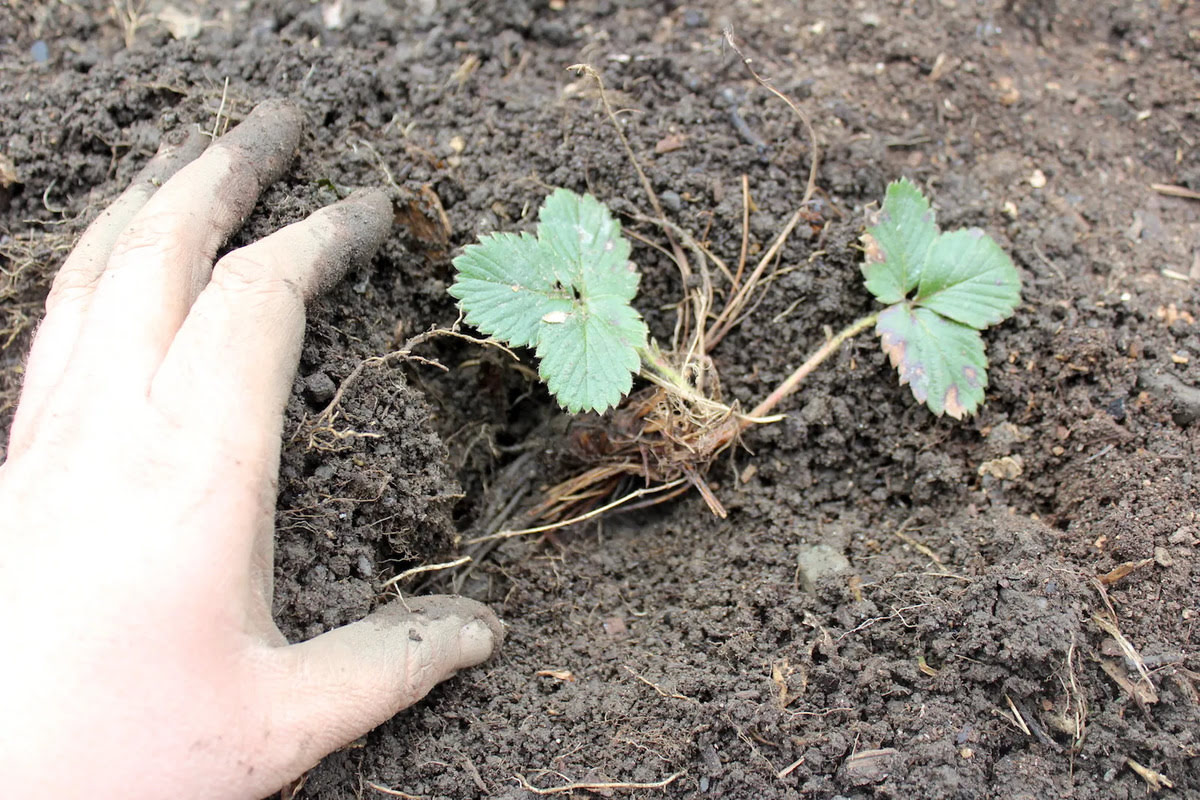

Edible Gardening
When To Transplant Strawberry Seedlings
Published: December 31, 2023
Discover the best time to transplant strawberry seedlings and ensure a thriving edible garden. Get expert tips and advice for successful edible gardening.
(Many of the links in this article redirect to a specific reviewed product. Your purchase of these products through affiliate links helps to generate commission for Chicagolandgardening.com, at no extra cost. Learn more)
Table of Contents
Introduction
Welcome to the world of edible gardening, where you can grow your own delicious fruits and vegetables right in your backyard! One of the joys of gardening is starting from seeds and watching them grow into healthy seedlings. However, when it comes to certain crops like strawberries, transplanting seedlings becomes a crucial step in their journey towards becoming fruitful plants.
Transplanting strawberry seedlings involves moving them from their initial growing containers to a more permanent spot in your garden. This process allows the seedlings to establish stronger roots and ultimately leads to bigger and healthier plants that will yield a bountiful harvest.
In this article, we will explore the key factors to consider when deciding the right time to transplant your strawberry seedlings. We will discuss the importance of seedling size and development, weather conditions, and soil and site preparation. Additionally, we will provide you with essential techniques for successful transplantation and tips on how to care for your transplanted seedlings.
So strap on your gardening gloves and let’s dive into the world of transplanting strawberry seedlings!
Factors to Consider
Before transplanting your strawberry seedlings, it is important to consider a few key factors to ensure their successful transition into your garden. These factors include timing, seedling size and development, weather conditions, and soil and site preparation.
Timing for Transplanting: Timing is crucial when it comes to transplanting strawberry seedlings. You want to make sure the seedlings are strong and healthy enough to handle the transplantation process. Generally, it is recommended to transplant strawberry seedlings when they have developed two to four true leaves and are around four to six weeks old. This allows the plants to establish a strong root system before being exposed to the outdoor environment.
Seedling Size and Development: The size and development of your strawberry seedlings play a significant role in determining when they are ready to be transplanted. Look for seedlings that have sturdy stems, well-developed leaves, and a healthy root system. Avoid transplanting seedlings that are too small or weak, as they may struggle to survive in the garden.
Weather Conditions: The weather conditions at the time of transplantation are crucial for the success of your strawberry seedlings. Ideally, choose a day with mild temperatures, preferably in the early morning or late afternoon. Avoid transplanting on hot, sunny days as the intense heat can stress the seedlings. Similarly, avoid transplanting during periods of heavy rain or strong winds, as these conditions can damage the delicate seedlings.
Soil and Site Preparation: Prepare the soil and site where you intend to transplant your strawberry seedlings. Choose a well-drained area with fertile soil that receives at least six hours of direct sunlight. Remove any weeds, rocks, or debris from the planting area and amend the soil with organic matter, such as compost or aged manure, to improve its nutrient content and drainage.
By considering these factors before transplanting your strawberry seedlings, you can ensure their successful establishment in your garden. Now that we have covered the factors to consider, let’s move on to the next section to learn about the optimal timing for transplanting.
Timing for Transplanting
Choosing the right time to transplant your strawberry seedlings is crucial for their successful growth and development. It ensures that the plants have the best chance of thriving in their new environment. The optimal timing for transplanting can vary depending on your climate and specific growing conditions.
As a general rule of thumb, strawberry seedlings should be transplanted when they are around four to six weeks old and have developed two to four true leaves. At this stage, the seedlings are usually strong enough to handle the transplantation process and can establish their root system effectively.
It is essential to avoid transplanting your seedlings too early or too late. If you transplant them too early, when they are too small or underdeveloped, they may struggle to survive in the garden. On the other hand, if you wait too long to transplant, the seedlings may become root-bound in their starter containers, hindering their growth and development.
Pay attention to the weather conditions when determining the timing for transplanting. Choose a day with mild temperatures, preferably in the early morning or late afternoon when the sun is not at its peak intensity. This helps minimize stress on the seedlings and allows them to adjust to their new environment more easily.
Additionally, be mindful of any potential frost dates in your area. Transplanting strawberry seedlings too early and exposing them to frost can significantly damage or even kill the plants. Ensure that the risk of frost is minimal before proceeding with transplantation.
By considering the age and size of your strawberry seedlings, along with the prevailing weather conditions, you can find the optimal timing for transplanting. This ensures that your seedlings have the best chance of thriving in your garden and producing an abundant harvest.
Now that we have discussed the timing for transplanting, let’s move on to the next section where we will explore the importance of seedling size and development.
Seedling Size and Development
The size and development of your strawberry seedlings are important considerations when deciding the optimal time for transplanting. Seedlings that are too small or underdeveloped may struggle to establish themselves in the garden, while those that are too large may become root-bound and hinder their growth.
When assessing the size of your strawberry seedlings for transplantation, look for sturdy stems and well-developed leaves. The stems should be strong and able to support the weight of the leaves without bending or drooping. The leaves should be green and healthy, indicating that the seedlings have been receiving adequate nutrients and sunlight.
Pay attention to the root system of your seedlings as well. Ideally, the roots should be well-developed and fill the growing container or starter tray. Avoid seedlings with weak or sparse root systems, as they may struggle to establish themselves in the garden soil.
It is also important to consider the overall growth and maturity of the seedlings. Look for seedlings that have developed two to four true leaves. True leaves are the second set of leaves that appear after the cotyledons, or seed leaves. These leaves are typically larger and have a more defined shape compared to the initial leaves of the seedlings.
Transplanting seedlings at this stage allows them to have a stronger root system and a good foundation for growth. It also ensures that they have enough energy reserves to successfully adapt to the outdoor environment and continue their development.
However, avoid waiting too long to transplant your seedlings, as they may become root-bound in their starter containers. Root-bound seedlings have roots that are tightly packed, encircling the container, which can hinder their ability to absorb nutrients and water efficiently. This can result in stunted growth and compromised plant health.
By considering the size and development of your strawberry seedlings, you can determine the optimal time for transplantation. Choosing seedlings that have sturdy stems, well-developed leaves, and a healthy root system ensures a smoother transition into your garden and sets them up for success in their new environment.
Now that we have discussed the importance of seedling size and development, let’s move on to the next section where we will explore the significance of weather conditions in the transplanting process.
Weather Conditions
Weather conditions play a vital role in the successful transplanting of strawberry seedlings. It is crucial to choose the right day and time when the weather is favorable to ensure the seedlings can adapt and thrive in their new environment.
An ideal day for transplanting strawberry seedlings is one with mild temperatures. Choose a day when the temperatures are not too hot or too cold. Transplanting during extreme heat can stress the seedlings, leading to wilting or even plant death. Similarly, transplanting during extremely cold temperatures can cause frost damage and stunt the growth of the seedlings.
The timing of the transplanting process is essential as well. It is recommended to transplant strawberry seedlings in the early morning or late afternoon when the sun is not at its peak intensity. This reduces the stress on the seedlings and allows them time to adjust to their new surroundings before being exposed to direct sunlight for an extended period.
Avoid transplanting during periods of heavy rain or strong winds. Excessively wet soil can lead to poor drainage, which can suffocate the roots and promote disease development. Strong winds can damage the delicate seedlings or even uproot them before they have a chance to establish themselves.
It is also important to consider the long-term weather forecast when planning the transplanting. Look for a period of stable and relatively mild weather in the coming days after the transplanting. This gives the seedlings a better chance to acclimate and establish their roots before facing any adverse weather conditions.
Monitoring the weather conditions and making informed decisions about when to transplant your strawberry seedlings can greatly improve their chances of survival and successful growth. By selecting a day with mild temperatures, avoiding heavy rain and strong winds, and considering the long-term forecast, you can provide an optimal environment for your seedlings to thrive.
Now that we have discussed the importance of weather conditions, let’s move on to the next section, where we will explore the soil and site preparation necessary for successful transplantation.
Soil and Site Preparation
Proper soil and site preparation is crucial for the successful transplantation of strawberry seedlings. Creating an optimal growing environment ensures that the seedlings can establish themselves quickly, grow vigorously, and produce a bountiful harvest.
Start by selecting a well-drained area for your strawberry patch. Strawberries prefer soil that is not waterlogged and drains well. Avoid areas that often retain excess water, as this can lead to root rot and other diseases. If your soil doesn’t naturally have good drainage, you can improve it by adding organic matter such as compost or well-rotted manure to improve the soil structure.
Clear the planting area from weeds, rocks, and any other debris that could hinder the growth of your seedlings. Weeds compete with the strawberries for nutrients, water, and sunlight, so it is important to remove them before transplanting. Clearing the area also ensures that your seedlings have enough space to grow and spread their roots without any obstructions.
Before planting, it’s a good idea to amend the soil with organic matter. Compost, aged manure, or composted leaf litter can improve the soil fertility and nutrient levels. Work the organic matter into the top few inches of soil to create a nutrient-rich planting bed for your seedlings. This will provide them with the necessary nutrients to establish strong root systems and encourage healthy growth.
Strawberries thrive in soil with a slightly acidic pH level of around 6.0 to 6.5. You can test your soil’s pH level using a soil testing kit and adjust it accordingly by adding lime to raise the pH or sulfur to lower it. Maintaining the correct pH level ensures maximum nutrient availability for your strawberry plants.
Ensure that your selected site receives at least six hours of direct sunlight per day. Strawberries require full sun to produce the best fruit. If your chosen area is partially shaded, choose a different spot or consider pruning nearby plants to improve sunlight exposure.
By preparing the soil and site properly, you provide the best conditions for your strawberry seedlings to thrive. Well-drained soil, clear of weeds and debris, and amended with organic matter creates an environment where the seedlings can establish themselves and grow into healthy plants.
Now that we have covered the importance of soil and site preparation, let’s move on to the next section, where we will delve into the techniques for transplanting strawberry seedlings.
Transplanting Techniques
Now that you have prepared your soil and site, it’s time to dive into the actual process of transplanting your strawberry seedlings. Following proper transplanting techniques will help ensure the success and healthy growth of your seedlings.
Start by watering your seedlings thoroughly a few hours before transplanting. Moist soil helps the roots stay intact during the transplanting process and reduces the stress on the seedlings. Avoid watering the seedlings immediately before transplantation, as excessively wet soil can make it difficult to handle and plant the seedlings.
Use a trowel or a small garden shovel to dig individual holes for each seedling in the prepared soil. Make sure the holes are wide and deep enough to accommodate the entire root system without crowding or bending the roots. Keep a spacing of about 12-18 inches between each hole to allow room for the plants to spread and grow.
Gently remove each seedling from its container, taking care not to damage the delicate roots. You can use your fingers to loosen the root ball if necessary. Place the seedling into the prepared hole, making sure it is planted at the same depth as it was in its original container. Gently backfill the hole with soil, firming it around the seedling to eliminate any air pockets.
Water the transplanted seedlings immediately after planting. This helps settle the soil around the roots and ensures good root-to-soil contact. Be careful not to overwater, as excessively wet soil can suffocate the roots. Monitor the soil moisture levels in the following days and water as needed to keep the soil consistently moist but not waterlogged.
If you are transplanting multiple seedlings, it can be helpful to create rows or raised beds to make the maintenance and harvesting process more manageable. This allows for better airflow and weed control. Consider applying a layer of mulch around the seedlings to help retain moisture, suppress weeds, and regulate soil temperature.
After transplanting, monitor your seedlings closely for the first few weeks. Keep an eye on the soil moisture levels, weed growth, and any signs of pest or disease damage. Regularly remove any weeds that may compete with the seedlings for nutrients and water.
By following these transplanting techniques, you can ensure the healthy establishment of your strawberry seedlings. It’s an exciting step in the gardening journey that brings you closer to enjoying the delectable fruits of your labor.
Now that we have covered the transplanting techniques, let’s move on to the final section of this article, where we will explore how to care for your transplanted seedlings.
Caring for Transplanted Seedlings
After the transplanting process, it’s important to provide proper care and attention to your newly transplanted strawberry seedlings. By following a few essential practices, you can help them establish strong root systems, promote healthy growth, and maximize fruit production.
Watering is a crucial aspect of caring for transplanted seedlings. Keep the soil consistently moist, but avoid overwatering, as it can lead to root rot and other moisture-related issues. Regularly check the moisture levels in the soil, especially during hot and dry periods. Water deeply and thoroughly to ensure the water reaches the roots. Watering in the morning is often recommended to give the plants time to dry before nighttime, reducing the risk of fungal diseases.
Mulching is another important practice that helps retain moisture, suppress weed growth, and regulate soil temperature. Apply a layer of organic mulch, such as straw or wood chips, around the plants, taking care not to smother the crown of the strawberry plants. Mulching also helps prevent soil splashing onto the leaves and fruits, reducing the potential for diseases.
Regularly remove any weeds that may emerge around your seedlings. Weeds compete with the strawberry plants for nutrients, water, and sunlight. Gently hand-pull or use a hoe to cut them at the soil surface to prevent them from robbing your plants of essential resources.
Fertilizing is crucial for providing the necessary nutrients to your transplanted seedlings. Start by incorporating compost or well-rotted manure into the soil during the initial preparation stage. This helps replenish the soil’s nutrient content. Additionally, consider applying a balanced organic fertilizer specifically formulated for strawberries, following the recommended dosage and frequency as indicated on the packaging.
Pest and disease management is also a vital aspect of caring for your transplanted seedlings. Monitor your plants regularly for any signs of pests such as aphids, slugs, or snails. Remove any pests you find by hand or use organic pest control methods if necessary. Be on the lookout for common strawberry diseases like powdery mildew or gray mold and take appropriate measures to prevent or treat them to ensure the health of your plants.
Regularly inspect your plants for any damaged or diseased leaves or fruits and remove them promptly. This helps prevent the spread of diseases and encourages the growth of healthy new foliage and fruits.
Finally, provide support for your plants as they grow and start producing fruits. Strawberry plants can become heavy with the weight of their fruits, causing them to bend or even break. Gently place a small stake or use a trellis system to support the plants and prevent any damage.
By providing proper care and attention to your transplanted seedlings, you can ensure their healthy growth and maximize their yield potential. Regular watering, mulching, weeding, fertilizing, pest and disease management, and providing support as needed are essential practices for successful strawberry gardening.
Now that we have covered the importance of caring for transplanted seedlings, you are well-equipped to nurture your strawberry plants and enjoy a fruitful harvest.
Conclusion
Congratulations! You are now armed with the knowledge and techniques to successfully transplant your strawberry seedlings and care for them as they grow into thriving plants. By considering factors such as timing, seedling size and development, weather conditions, and soil preparation, you can ensure a smooth transition for your seedlings and optimize their chances of producing a bountiful strawberry harvest.
Remember to transplant your seedlings when they have developed two to four true leaves and are around four to six weeks old. Choose a day with mild temperatures and avoid extreme weather conditions to minimize stress on the seedlings. Prepare the soil and planting site by ensuring good drainage, removing weeds and debris, and amending the soil with organic matter.
When transplanting, handle the seedlings gently and plant them at the same depth as they were in their original containers. Water the seedlings immediately after planting and maintain consistent soil moisture without overwatering. Implement mulching, regular weeding, and fertilization practices to promote healthy growth and prevent nutrient competition. Keep an eye out for pests and diseases, and take appropriate measures to manage them and maintain the overall health of your plants.
With proper care and attention, your transplanted strawberry seedlings will establish strong roots, produce abundant runners, and reward you with a sweet and plentiful harvest. Enjoy the journey of edible gardening and the satisfaction of growing your own delicious and nutritious strawberries.
So, let’s get started – put on your gardening gloves, grab your trowel, and embrace the joy of transplanting and nurturing your strawberry seedlings. Happy gardening!
